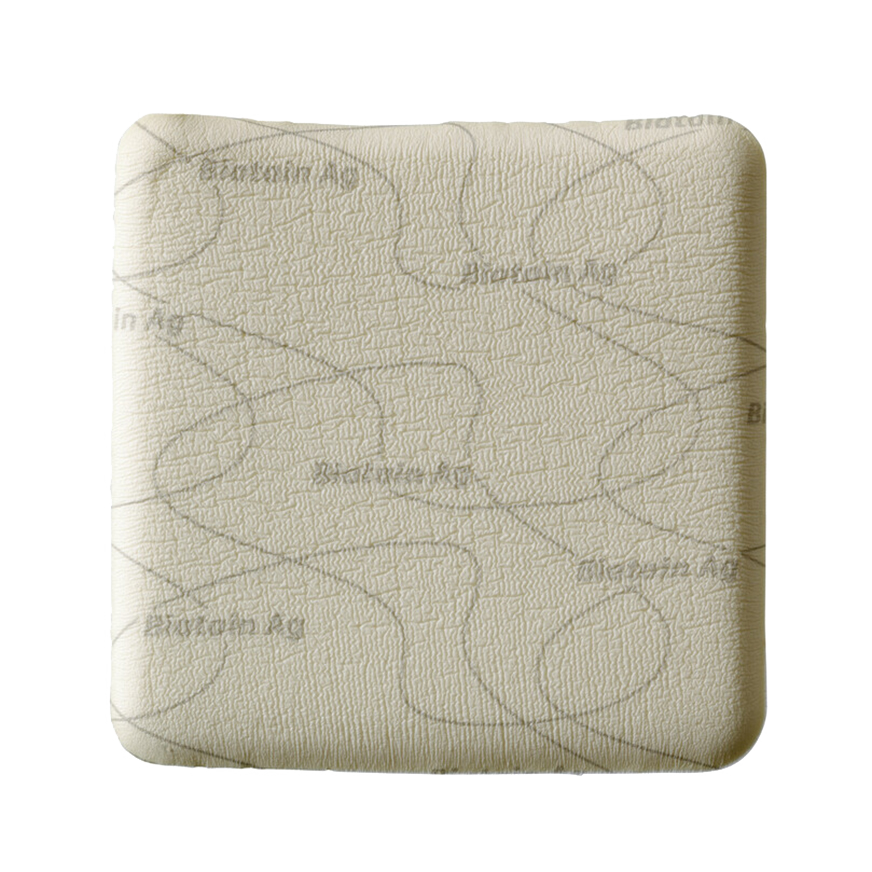Product description
Unique 3D foam structure for superior absorption
When in contact with exudate, the unique 3D foam structure of Biatain®Ag Non-Adhesive conforms closely to the wound bed for superior absorption – even under compression (5).
Designed to prevent infection
The sustained silver release profile ensures a homogenous distribution of silver ions, providing a continuous antibacterial effect for the entire wear time (up to 7 days) (6).
Patented silver complex with broad antibacterial profile
It has been proven in independent studies that Biatain® Ag is effective on bacteria commonly found in infected non-healing wounds (3,4). Clinical studies have shown that infected wounds heal faster with Biatain® Ag than with other wound dressings, including other antibacterial dressings (1,2,7).
Continuous antibacterial effect during entire wear time
Thanks to the sustained silver release profile, there is a continuous antibacterial effect during the entire wear time (up to 7 days) (6).
Mode of action
In the presence of exudate, silver is continuously released into the wound bed for up to 7 days (6).
Composition
Biatain® Ag Non-Adhesive is a soft and flexible absorbent polyurethane foam that contains a patented silver complex that is homogeneously dispersed throughout the foam matrix.
Usage
Biatain® Ag Non-Adhesive can be used for a wide range of exuding wounds with delayed healing due to bacteria, or where there is a risk of infection, including leg ulcers, pressure ulcers, diabetic foot ulcers, second-degree burns, donor sites, post-operative wounds and skin abrasions. Biatain® Ag Non-Adhesive can be used in combination with compression therapy.
REFERENCES
1. Leaper D. et al. The Use of Biatain® Ag in hard-to-heal venous leg ulcers: Meta-analysis of randomised controlled trials. PLOS ONE 2013: 8(7).
2. Münter K.C. et al. Effect of a sustained silver releasing dressing on ulcers with delayed healing: the CONTOP study. Journal of Wound Care. 2006:15(5):199-206.
3. Ip M. et al. Antimicrobial activities of silver dressings: an in vitro comparison. Journal of Medical Microbiology 2006:(55):59-63.
4. Basterzi Y. et al. In vitro comparison of antimicrobial efficacy of various wound dressing materials. Wounds July 2010.
5. Reitzel N. & Marburger M. Foam dressings containing silver tested in vitro for absorption capacity under pressure. EWMA 2009.
6. Buchholz C. An in vitro comparison of antimicrobial activity. Wounds UK 2009.
7. Scanlon E. et al. Cost-effective faster wound-healing with a sustained silver releasing foam dressing in delayed healing leg ulcers – a health economic analysis. International Wound Journal 2005:2(2):150-60.

